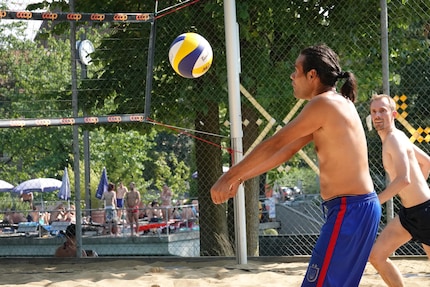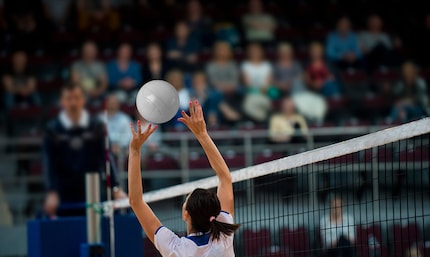

Compact, bridge or system camera? Advantages and disadvantages of the camera types

What do you want to use your camera for? This is the most important question when buying a camera. My advice for beginners: first find out what type of camera you need.
Cameras can be categorised into different types. A distinction is made between cameras with a fixed lens and those with an interchangeable lens. Depending on their size, cameras with a fixed lens are called compact or bridge cameras, while the others are system cameras.
Compact camera: always with you and better than a smartphone
A compact camera is so small and light that you can always have it with you. Its small size allows you to take pictures inconspicuously. However, it is not as easy to use or as good in terms of image quality as a large one.
So it competes with the smartphone. It differs from the camera in a mobile phone in several ways. One of these is the optical zoom. Here, however, there are extreme differences between the individual devices, from no zoom at all (first example) to 40x. With the filter options in the digitec shop, you can quickly find out which camera has how much zoom. You can also see this from the focal length in millimetres: In the example of the 40x zoom, the camera has a focal length of 24-960 mm. 24 is 40 times less than 960, so the lens has a 40x zoom. With a focal length of 24-70mm, it is just under a 3x zoom.
Another advantage over the smartphone: thanks to physical buttons and wheels, every compact camera is easier to use. The battery also lasts longer if the device is not used for games, Spotify and WhatsApp at the same time.
In recent years, numerous manufacturers have built electronic viewfinders into their compact cameras. This is very practical, as the screen is often reflective and you can't see exactly what you're taking a photo of. Another plus point compared to a smartphone.
Alle Kompaktkameras mit Sucher
Most compact cameras have a sensor size of 1 inch or 1/2.3 inch. 1 inch is quite small, 1/2.3 inch is very small. A small sensor does not cope well with hard contrasts, for example when water reflects. It also delivers poorer image quality in low light.
Compact cameras with the largest zoom range (30x and more) always have a very small sensor. This is physically impossible. Conversely, the Ricoh GR III has no zoom, but a very large sensor. The Panasonic TZ202 at least offers a 15x zoom with a 1-inch sensor.
The small sensor means that a larger part of the image is in focus. This makes it harder to separate the foreground from the background. This is a disadvantage in portrait photography, for example, or when the background is very blurred.


Source: shutterstock.com/sportoakimirka
Summary: Compact cameras are particularly suitable for trekking, biking and generally anywhere where mobility is the most important thing. Also for street photography, because they are inconspicuous. They are less suitable for sports, wild animals and portraits.
Bridge camera: one lens for everything
A bridge camera is so called because it forms a bridge between a compact camera and a system camera. In other words, a middle ground. Like the compact camera, it has a built-in lens, but is the same size and design as a system camera. This makes it easier to hold and there is more space for buttons and dials. Operation is therefore better than with a compact camera.
Most bridge cameras have an extremely large zoom range, which is why they are also called superzoom cameras. A built-in viewfinder is also almost always included. But beware, there are exceptions!
The very large zoom range comes at the expense of image quality. As with compact cameras, the sensors are usually 1 inch or 1/2.3 inch in size, i.e. small to very small. It is also not so easy to build an 80x zoom with good image quality. However, the weaknesses are usually only visible in poor light or when you view the image at maximum magnification.
Summary: A bridge camera is ideal for holidays, travelling and anything that requires a lot of zoom. The telephoto effect is usually so strong that you can get a large image of the moon. Bridge cameras are less good in low light (the moon itself is also bright enough at night).
System camera: connect several lenses
The lenses on a system camera can be interchanged. This allows you to constantly expand the performance of your camera. On the other hand, multiple lenses are also more expensive and less practical to use.
There are also lenses for system cameras that cover a universal zoom range. However, the zoom is smaller than with superzoom cameras. If you only buy one such lens, you might as well buy a bridge camera. You can find the universal zoom lenses here.
With system cameras, you choose a system, not just a camera. Once you have acquired a collection of lenses, you will most likely buy another camera of the same system, as you can then continue to use the lenses.
Mirrorless vs. single-lens reflex (SLR)
More and more systems are mirrorless, i.e. with an electronic viewfinder; SLR cameras are on the decline. If you still opt for an SLR system today, you get a lot of image quality for relatively little money and have a huge selection of lenses. However, there will be fewer and fewer innovations in these systems and at some point they will probably disappear from the market completely.
The future belongs to mirrorless cameras. They are smaller, have a better video function and they already show the image in the viewfinder as it will appear in the photo.
Sensor size
System cameras also have different sensor sizes. However, they are all larger than compact and bridge cameras. In general, system cameras offer the best image quality.
- Micro Four Thirds: 17×13 mm, crop factor approx. 2
- APS-C: 24×18 mm, crop factor 1.5
- Small format (full format): 36×24 mm, crop factor 1
- Medium format: inconsistent, Fujifilm uses 44×33 mm, crop factor approx. 0.8
The larger the sensor, the larger the image section with the same focal length. The crop factor is the number you use to calculate the same image section for different sensor sizes by multiplication or division. Example: If you want an image section of 50 millimetres in 35 mm, you need 25 mm for Micro-Four-Thirds, 35 mm for APS-C and 63 mm for medium format.
Lenses
The purchase decision for system cameras is more difficult because it depends not only on the camera itself, but also on the lenses available. For beginners, it is often unclear whether a lens fits a camera. You can find the basics in my lens guide.
Here are the three most important points:
- Lenses from all brands are not compatible without an adapter. Exception: Olympus and Panasonic use the same system.
- Mirror reflex lenses are only compatible with mirrorless cameras of the same brand with an adapter. At least the adapter works without focus restrictions - unlike cross-brand adapters.
- If the brand and type (with or without mirror) are the same, lenses for full-frame are also compatible with APS-C; but the image section is smaller. This is what was referred to above as the crop factor.
The most important camera systems
| brand | Name Camera | Object connection | Sensor size | Type |
|---|---|---|---|---|
| Canon | EOS D (two and three-digit) | EF-S | APS-C | SLR |
| Canon | EOS D (single-digit) | EF | Full format | SLR |
| Canon | EOS M | M | APS-C | Mirrorless |
| Canon | EOS R | RF | Full format | Mirrorless |
| Fujifilm | X | XF | APS-C | Mirrorless |
| Fujifilm | GFX | GF | Medium format | Mirrorless |
| Nikon | D (two- and four-digit) | DX | APS-C | SLR |
| Nikon | D (currently: one- and three-digit) | FX | Full format | SLR |
| Nikon | Z | Z | Full format | Mirrorless |
| Olympus and Panasonic | various | Micro Four Thirds | Micro Four Thirds | Mirrorless |
| Panasonic, Sigma, Leica | various | L | Full format | Mirrorless |
| Sony | Alpha (four-digit) | E | APS-C | Mirrorless |
| Sony | Alpha (single digit) | E | Full format | Mirrorless |
Summary: The system camera is the type for anyone who is involved in photography in depth. In other words, professionals and amateur photographers who want to invest time and money. The possible range of applications depends on your lenses and can cover practically everything. However, it is not ideal for snapshots.


My interest in IT and writing landed me in tech journalism early on (2000). I want to know how we can use technology without being used. Outside of the office, I’m a keen musician who makes up for lacking talent with excessive enthusiasm.
Practical solutions for everyday problems with technology, household hacks and much more.
Show all





